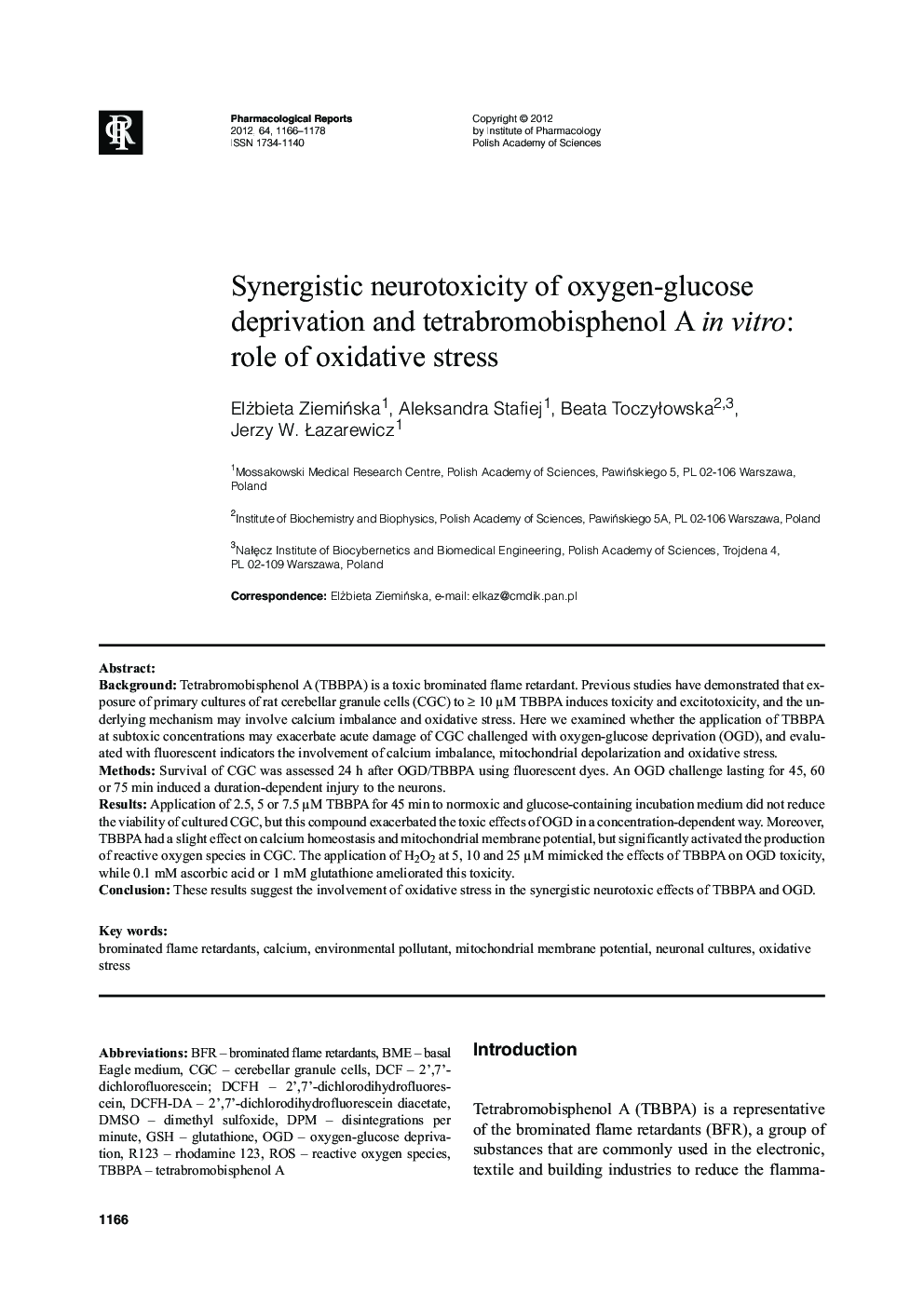| Article ID | Journal | Published Year | Pages | File Type |
|---|---|---|---|---|
| 2010720 | Pharmacological Reports | 2012 | 13 Pages |
BackgroundTetrabromobisphenol A (TBBPA) is a toxic brominated flame retardant. Previous studies have demonstrated that exposure of primary cultures of rat cerebellar granule cells (CGC) to ≥ 10 μM TBBPA induces toxicity and excitotoxicity, and the underlying mechanism may involve calcium imbalance and oxidative stress. Here we examined whether the application of TBBPA at subtoxic concentrations may exacerbate acute damage of CGC challenged with oxygen-glucose deprivation (OGD), and evaluated with fluorescent indicators the involvement of calcium imbalance, mitochondrial depolarization and oxidative stress.MethodsSurvival of CGC was assessed 24 h after OGD/TBBPA using fluorescent dyes. An OGD challenge lasting for 45, 60 or 75 min induced a duration-dependent injury to the neurons.ResultsApplication of 2.5, 5 or 7.5 μM TBBPA for 45 min to normoxic and glucose-containing incubation medium did not reduce the viability of cultured CGC, but this compound exacerbated the toxic effects of OGD in a concentration-dependent way. Moreover, TBBPA had a slight effect on calcium homeostasis and mitochondrial membrane potential, but significantly activated the production of reactive oxygen species in CGC. The application of H2O2 at 5, 10 and 25 μM mimicked the effects of TBBPA on OGD toxicity, while 0.1 mM ascorbic acid or 1 mM glutathione ameliorated this toxicity.ConclusionThese results suggest the involvement of oxidative stress in the synergistic neurotoxic effects of TBBPA and OGD.
